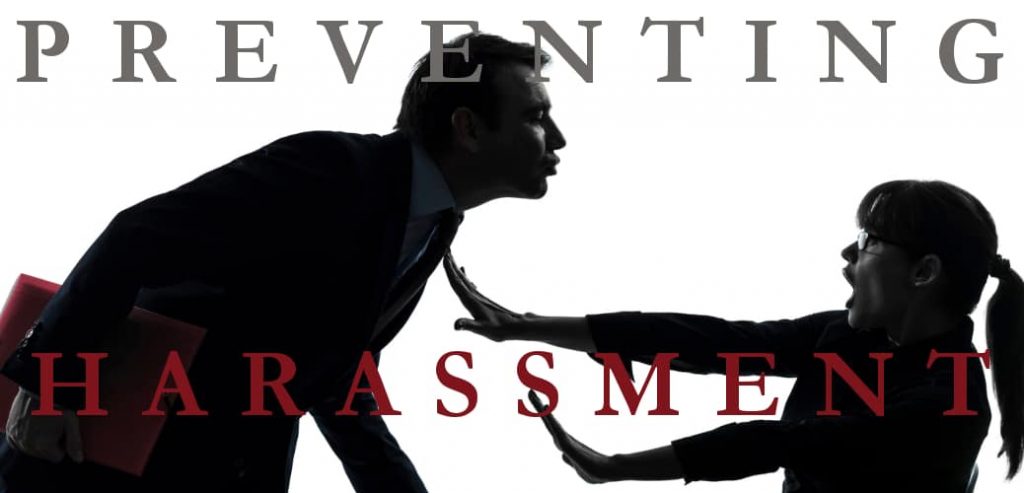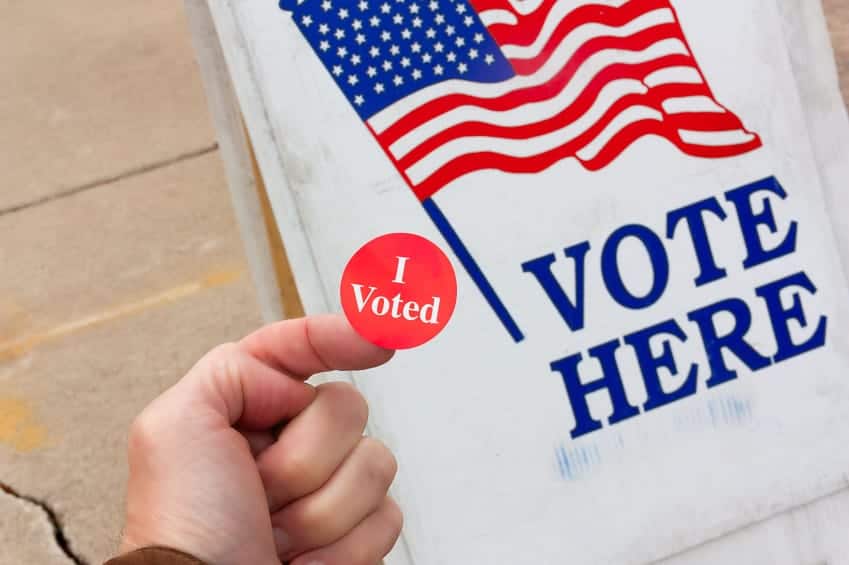At a Donald Trump rally in Chicago last, violence broke out among Trump supporters and protesters that got to be so bad, the rally was called off.
What Exactly Is Happening at Trump’s “Love-Fests”?
This is not the first such incident to happen at a Trump rally, either. Earlier, an older man sucker punched an African-American protester in the face while he was being restrained and escorted out. And several other acts of violence have been reported as well.
As is always the case when violence occurs, there are fingers being pointed all over the place as to who is at fault. In any type of public violence, you inevitably start to see fingers being pointed high in the air at the presumed authority figures in charge.
In this case, that means the politicians.
Donald Trump has said that this is all Bernie Sanders doing. After all, many of the protesters are his. He even Tweeted that Bernie better watch out because Trump fans might start attending Sander’s rallies.
Sanders and Clinton blame Trump. They say that his approval and support of violence, as evidenced by his being attributed with saying he would pay for the legal fees for an attendee caught in a scrap of this nature, have led to an environment where violence is not only accepted, but encouraged.
While Trump denies that he is anything but peaceful, even going so far as to call his rallies “love-fests,” he does not appear to have the support of his fellow republicans.
Everyone from his fellow candidates to the house speaker have come out and said on the record that Trump is at least partially responsible for the environment of his rallies and his tendency to use rhetoric intended to fuel violence and unrest.
Creating a Culture of Violence
All of this got me thinking about the work environment. If Trump were the boss and the people at his rallies were his employees, just where would liability lie?
I feel this is a pertinent question because Trump prides himself on being a top-notch businessman and there is a distinct possibility that he could one day soon be running the country. So how are his business leader skills holding up as he holds rally after rally, with violent act after violent act hounding his footsteps and raising more and more questions about his capabilities?
To start answering this question, we need to look at the biggest law dictating this issue – the Occupational Safety and Health Administration (OSHA) has the General Duty Clause.
This says that an employer has to provide a safe and healthy workplace. OSHA takes this to mean that a workplace should be free from violence, to the level reasonably possible.
Now let me clarify: this does not mean if a violent act occurs at your workplace, you are definitely responsible from OSHA’s liability standpoint. However, if you are shown to have an environment where violence is being fostered or ignored, then you might find yourself in trouble.
There are many ways that you could go about proving an employer is fostering or ignoring a violent workplace culture.
- What You Say. In the Trump example, his critics use his past comments to show his attitude about the topic. For example, “If you see someone getting ready to throw a tomato, knock the crap out of them, would you? Seriously. Knock the hell out of them. I promise you I will pay for the legal fees. I promise,” and “We need to toughen up.” Similarly, your statements, both written and verbal, will be used to determine the environment you are creating.
- The Extent of the Violence. Let’s be honest. One small fight at work that leads to someone being hurt might result in a workers’ compensation claim, but is unlikely to result in a citation or a lawsuit for the whole company. However, if fights and acts of violence are occurring constantly or at the very least frequently, then we may have a different story. Because…
- The Steps Taken to Correct Violence. The more often violence is occurring, the less it is likely the workplace is doing what it needs to do to stop it. If you are taking real, actionable steps to minimize violence, and we’ll get more into how to do that later, then there is not as likely to be strings of violent acts popping up everywhere. In other words, the tougher you are on violence, the fewer acts of violence you will likely see.
What Exactly Constitutes Workplace Violence Anyway?
If you think of workplace violence, you might think of the worst case scenarios, such as workplace shootings. Now obviously, those are the most extreme versions and they account for a scary proportion of the acts of violence that occur. However, they are not the only things that you need to discourage.
According to OSHA, workplace violence is
“any act or threat of physical violence, harassment, intimidation, or other threatening disruptive behavior that occurs at the work site. It ranges from threats and verbal abuse to physical assaults and even homicide. It can affect and involve employees, clients, customers and visitors.”
Based on this definition, even the threat of violence counts as workplace violence.
In other words, don’t just have a policy against guns and weapons and think you have done your job to protect workers. Violence goes much farther than that, and so does your duty to your employees and customers.
Breaking it down, there are four main types of violent acts in workplace.
- Violence by employees. E.g., two workers get in a fight in the break room.
- Violence by strangers. E.g., someone comes in to rob your store and injures the cashier.
- Violence by customers. E.g., a client gets mad during a negotiation and hits an employee.
- Violence by personal relations. E.g., a worker’s husband comes in and hurts his wife while she is at work.
Stats on Workplace Violence
Homicide is, according to OSHA (see link above), the fourth biggest cause of occupational injuries that result in death. It is also the most extreme form of workplace violence.
According to stats taken from a CNN article written in August of 2015, here are some things we can say about workplace violence in the USA:
- Bullying and intimidation have likely effected almost every workplace, but it is also the most likely type of violence to go unreported.
- Between 1992 and 2010, 14,770 workplace homicides occurred, which roughly equates to 700 a year, which is almost two a day.
- 78% of those homicides were the result of gun violence.
- In 2009 alone, there were 572,000 reported acts of nonfatal violence in workplaces. Experts agree that there were likely many unreported cases as well.
Steps to Take to Reduce Workplace Violence
Hopefully if you have taken nothing else from this, you will take away the fact that workplace violence is a serious issue, and one that you need to take seriously in your workplace.
To help, here are some things you can do to start creating an environment where violence is not welcome:
- Create a policy that states violence of any form is prohibited in your workplace.
- Enforce that policy when violence does occur.
- Create an environment where workers are not afraid to report situations that make them feel uncomfortable or unsafe, as well as situations where any level of violence actually occurred. Never retaliate against a worker for making such a report.
- Take any threats or complaints you hear seriously. Even if in the end it turns out to be nothing, investigating potential problems immediately is the best way to keep them from becoming actual problems.
- While following federal, state, and local laws, take appropriate steps to hire employees who are less likely be violent. You may have limitations on how you can use background checks and whether you can refuse to hire a former convict, but there are still other things you can look for that might suggest an employee is not suitable because of his or her violent or aggressive behaviors.
- Have security measures in place to reduce the likelihood of violence and to swiftly stop any acts that may occur. This could mean hiring security guards, having cameras in place, using security badges for access to buildings, keeping parking lots well lit, and much more.
- Watch what you say. You don’t want your comments on violence to suggest to your employees, OSHA inspectors, or any other person that you are fine with violence.
- If you are firing someone who you think might have the potential for violence, take some extra precautions. For anybody you are letting go, take some common sense approaches to the termination to limit potential retribution and liability.
Part of Keeping Workers Safe Is Keeping Violence Down
There may not be any laws specifically on violence that have to do with your workplace, but you do have a duty to provide a safe workplace. And that means one where workers do not have to feel scared to come in everyday for fear of being hurt or even killed.
It is the employer’s job, duty, and legal obligation to create an environment where violence is not the norm and where it is not being fostered. With that analysis, I’d have to say that if Trump rallies were workplaces, and of course to an extent it is since many people are working there, and all of Trump’s critics are right that he is encouraging and supporting violence at his events, then he actually could be legally liable under OSHA’s General Duty Standard.
Regardless of his culpability, though, remember that if you have a business, then you do have the obligation to stop and limit violence as part of your overall efforts to keep your workers safe and healthy.


![Are Employers Liable When Employees Are Accused of Racism? [e283] Racist Employee](https://www.pashalaw.com/wp-content/uploads/2016/12/Are-employers-liable-when-an-employees-are-accused-of-racism-1024x543.jpg)
![Can Employers Implement English Only Policies Without Discriminating? [e281]](https://www.pashalaw.com/wp-content/uploads/2016/11/Can-Employers-Impliment-English-Only-Policies-Without-Discriminating-1024x543.jpg)

![Can Restaurants Deny Service To Trump Supporters? [e261]](https://www.pashalaw.com/wp-content/uploads/2016/03/CAN-RESTAURANTS-DENY-SERVICE-TO-TRUMP-SUPPORTERS--1024x493.jpg)






![Law in the Digital Age: Exploring the Legal Intricacies of Artificial Intelligence [e323]](https://www.pashalaw.com/wp-content/uploads/2023/11/WhatsApp-Image-2023-11-21-at-13.24.49_4a326c9e-300x212.jpg)
![Unraveling the Workforce: Navigating the Aftermath of Mass Layoffs [e322]](https://www.pashalaw.com/wp-content/uploads/2023/07/Untitled-design-23-300x212.png)
![Return to the Office vs. Remote: What Can Employers Legally Enforce? [e321]](https://www.pashalaw.com/wp-content/uploads/2023/01/Pasha_LSSB_321_banner-300x212.jpg)
![Explaining the Hans Niemann Chess Lawsuit v. Magnus Carlsen [e320]](https://www.pashalaw.com/wp-content/uploads/2022/10/LAWYER-EXPLAINS-7-300x169.png)
![California v. Texas: Which is Better for Business? [313]](https://www.pashalaw.com/wp-content/uploads/2021/07/Pasha_LSSB_CaliforniaVSTexas-300x212.jpg)
![Buyers vs. Sellers: Negotiating Mergers & Acquisitions [e319]](https://www.pashalaw.com/wp-content/uploads/2022/06/Pasha_LSSB_BuyersVsSellers_banner-300x212.jpg)
![Employers vs. Employees: When Are Employment Restrictions Fair? [e318]](https://www.pashalaw.com/wp-content/uploads/2022/05/Pasha_LSSB_EmployeesVsEmployers_banner-1-300x212.jpg)
![Vaccine Mandates Supreme Court Rulings [E317]](https://www.pashalaw.com/wp-content/uploads/2022/02/WhatsApp-Image-2022-02-11-at-4.10.32-PM-300x212.jpeg)
![Business of Healthcare [e316]](https://www.pashalaw.com/wp-content/uploads/2021/11/Pasha_LSSB_BusinessofHealthcare_banner-300x212.jpg)
![Social Media and the Law [e315]](https://www.pashalaw.com/wp-content/uploads/2021/10/WhatsApp-Image-2021-10-06-at-1.43.08-PM-300x212.jpeg)
![Defining NDA Boundaries: When does it go too far? [e314]](https://www.pashalaw.com/wp-content/uploads/2021/09/Pasha_LSSB_NDA_WordPress-2-300x212.jpg)
![More Than a Mistake: Business Blunders to Avoid [312] Top Five Business Blunders](https://www.pashalaw.com/wp-content/uploads/2021/06/Pasha_LSSB_Blunders_WP-1-300x212.jpg)
![Is There a Right Way to Fire an Employee? We Ask the Experts [311]](https://www.pashalaw.com/wp-content/uploads/2021/02/Pasha_LSSB_FireAnEmployee_Website-300x200.jpg)
![The New Frontier: Navigating Business Law During a Pandemic [310]](https://www.pashalaw.com/wp-content/uploads/2020/12/Pasha_LSSB_Epidsode308_Covid_Web-1-300x200.jpg)
![Wrap Up | Behind the Buy [8/8] [309]](https://www.pashalaw.com/wp-content/uploads/2020/11/Pasha_BehindTheBuy_Episode8-300x200.jpg)
![Is it all over? | Behind the Buy [7/8] [308]](https://www.pashalaw.com/wp-content/uploads/2020/09/iStock-1153248856-overlay-scaled-300x200.jpg)
![Fight for Your [Trademark] Rights | Behind the Buy [6/8] [307]](https://www.pashalaw.com/wp-content/uploads/2020/07/Fight-for-your-trademark-right-300x200.jpg)
![They Let It Slip | Behind the Buy [5/8] [306]](https://www.pashalaw.com/wp-content/uploads/2020/06/Behind-the-buy-they-let-it-slip-300x200.jpg)
![Mo’ Investigation Mo’ Problems | Behind the Buy [4/8] [305]](https://www.pashalaw.com/wp-content/uploads/2020/05/interrobang-1-scaled-300x200.jpg)
![Broker or Joker | Behind the Buy [3/8] [304] Behind the buy - Broker or Joker](https://www.pashalaw.com/wp-content/uploads/2020/04/Joker-or-Broker-1-300x185.jpg)
![Intentions Are Nothing Without a Signature | Behind the Buy [2/8] [303]](https://www.pashalaw.com/wp-content/uploads/2020/04/intentions-are-nothing-without-a-signature-300x185.jpg)
![From First Steps to Final Signatures | Behind the Buy [1/8] [302]](https://www.pashalaw.com/wp-content/uploads/2020/04/first-steps-to-final-signatures-300x185.jpg)
![The Dark-side of GrubHub’s (and others’) Relationship with Restaurants [e301]](https://www.pashalaw.com/wp-content/uploads/2015/04/When-Competition-Goes-Too-Far-Ice-Cream-Truck-Edition-300x201.jpg)
![Ultimate Legal Breakdown of Internet Law & the Subscription Business Model [e300]](https://www.pashalaw.com/wp-content/uploads/2019/05/Ultimate-Legal-Breakdown-of-Internet-Law-the-Subscription-Business-Model-300x196.jpg)
![Why the Business Buying Process is Like a Wedding?: A Legal Guide [e299]](https://www.pashalaw.com/wp-content/uploads/2019/03/futura-300x169.jpg)
![Will Crowdfunding and General Solicitation Change How Companies Raise Capital? [e298]](https://www.pashalaw.com/wp-content/uploads/2018/11/Will-Crowdfunding-and-General-Solicitation-Change-How-Companies-Raise-Capital-300x159.jpg)
![Pirates, Pilots, and Passwords: Flight Sim Labs Navigates Legal Issues (w/ Marc Hoag as Guest) [e297]](https://www.pashalaw.com/wp-content/uploads/2018/07/flight-sim-labs-300x159.jpg)
![Facebook, Zuckerberg, and the Data Privacy Dilemma [e296] User data, data breach photo by Pete Souza)](https://www.pashalaw.com/wp-content/uploads/2018/04/data-300x159.jpg)
![What To Do When Your Business Is Raided By ICE [e295] I.C.E Raids business](https://www.pashalaw.com/wp-content/uploads/2018/02/ice-cover-300x159.jpg)
![General Contractors & Subcontractors in California – What you need to know [e294]](https://www.pashalaw.com/wp-content/uploads/2018/01/iStock-666960952-300x200.jpg)
![Mattress Giants v. Sleepoplis: The War On Getting You To Bed [e293]](https://www.pashalaw.com/wp-content/uploads/2017/12/sleepopolis-300x159.jpg)
![The Harassment Watershed [e292]](https://www.pashalaw.com/wp-content/uploads/2017/12/me-2-300x219.jpg)
![Investing and Immigrating to the United States: The EB-5 Green Card [e291]](https://www.pashalaw.com/wp-content/uploads/2012/12/eb-5-investment-visa-program-300x159.jpg)
![Responding to a Government Requests (Inquiries, Warrants, etc.) [e290] How to respond to government requests, inquiries, warrants and investigation](https://www.pashalaw.com/wp-content/uploads/2017/10/iStock_57303576_LARGE-300x200.jpg)
![Ultimate Legal Breakdown: Employee Dress Codes [e289]](https://www.pashalaw.com/wp-content/uploads/2017/08/Ultimate-Legal-Breakdown-Template-1-300x159.jpg)
![Ultimate Legal Breakdown: Negative Online Reviews [e288]](https://www.pashalaw.com/wp-content/uploads/2017/06/Ultimate-Legal-Breakdown-Online-Reviews-1-300x159.jpg)
![Ultimate Legal Breakdown: Social Media Marketing [e287]](https://www.pashalaw.com/wp-content/uploads/2017/06/ultimate-legal-breakdown-social-media-marketing-blur-300x159.jpg)
![Ultimate Legal Breakdown: Subscription Box Businesses [e286]](https://www.pashalaw.com/wp-content/uploads/2017/03/ultimate-legal-breakdown-subscription-box-services-pasha-law-2-300x159.jpg)
![Can Companies Protect Against Foreseeable Misuse of Apps [e285]](https://www.pashalaw.com/wp-content/uploads/2017/01/iStock-505291242-300x176.jpg)
![When Using Celebrity Deaths for Brand Promotion Crosses the Line [e284]](https://www.pashalaw.com/wp-content/uploads/2017/01/celbrity-300x159.png)
![Are Employers Liable When Employees Are Accused of Racism? [e283] Racist Employee](https://www.pashalaw.com/wp-content/uploads/2016/12/Are-employers-liable-when-an-employees-are-accused-of-racism-300x159.jpg)
![How Businesses Should Handle Unpaid Bills from Clients [e282] What to do when a client won't pay.](https://www.pashalaw.com/wp-content/uploads/2016/12/How-Businesses-Should-Handle-Unpaid-Bills-to-Clients-300x159.png)
![Can Employers Implement English Only Policies Without Discriminating? [e281]](https://www.pashalaw.com/wp-content/uploads/2016/11/Can-Employers-Impliment-English-Only-Policies-Without-Discriminating-300x159.jpg)
![Why You May No Longer See Actors’ Ages on Their IMDB Page [e280]](https://www.pashalaw.com/wp-content/uploads/2016/10/IMDB-AGE2-300x159.jpg)
![Airbnb’s Discrimination Problem and How Businesses Can Relate [e279]](https://www.pashalaw.com/wp-content/uploads/2016/09/airbnb-300x159.jpg)
![What To Do When Your Amazon Account Gets Suspended [e278]](https://www.pashalaw.com/wp-content/uploads/2016/09/What-To-Do-When-Your-Amazon-Account-Gets-Suspended-1-300x200.jpg)
![How Independent Artists Reacted to Fashion Mogul Zara’s Alleged Infringement [e277]](https://www.pashalaw.com/wp-content/uploads/2016/08/How-Independent-Artists-Reacted-to-Fashion-Mogul-Zaras-Alleged-Infringement--300x159.jpg)
![Can Brave’s Ad Replacing Software Defeat Newspapers and Copyright Law? [e276]](https://www.pashalaw.com/wp-content/uploads/2016/08/Can-Braves-Ad-Replacing-Software-Defeat-Newspapers-and-Copyright-Law-300x159.jpg)
![Why The Roger Ailes Sexual Harassment Lawsuit Is Far From Normal [e275]](https://www.pashalaw.com/wp-content/uploads/2016/07/WHY-THE-ROGER-AILES-SEXUAL-HARASSMENT-LAWSUIT-IS-FAR-FROM-NORMAL-300x159.jpeg)
![How Starbucks Turned Coveted Employer to Employee Complaints [e274]](https://www.pashalaw.com/wp-content/uploads/2016/07/iStock_54169990_LARGE-300x210.jpg)
